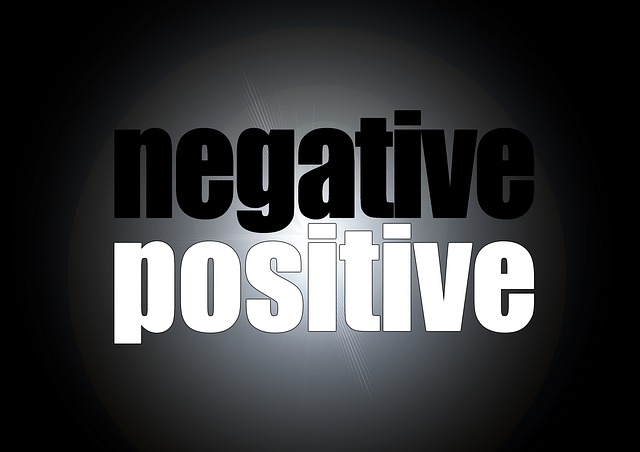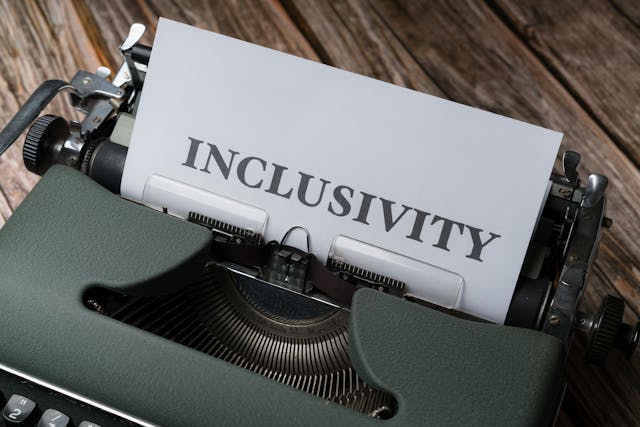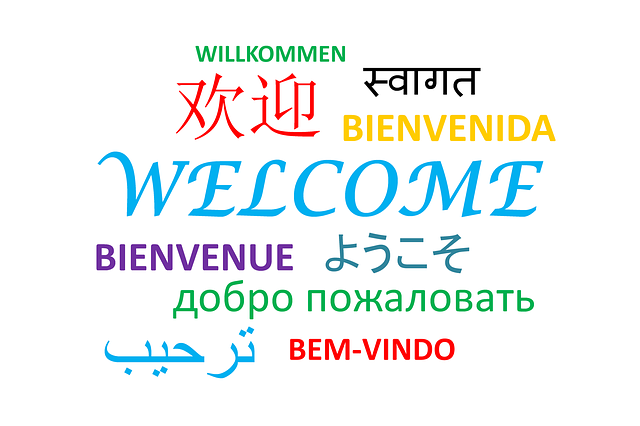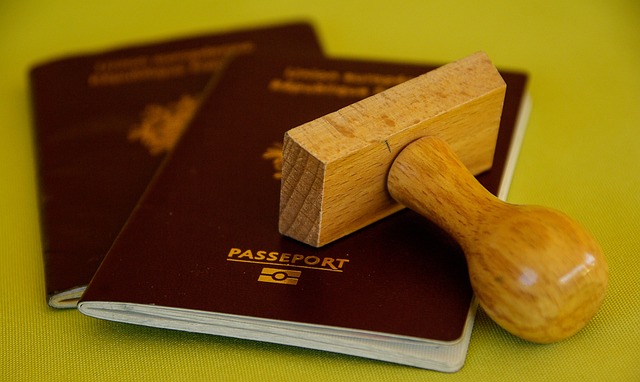Rapid Translate Team
Biased language revolves around offensive speech that makes someone or a sect of people feel inferior. But there’s more to it, so people crave to understand what is biased language. It’s also important to know its effect on effective communication.
Using negative phrases and sentences instead of neutral terms can alter the intended meaning of messages. It often breeds displeasure and could lead to hostility. Hence, it is important to choose your words wisely when communicating.
Read on to learn about language bias and how to avoid it!

Table of Contents
Understanding Biased Language Definition
Biased language consists of words, phrases, or sentences that reflect prejudice and stereotypical views. People direct these expressions to individuals or groups bound by race, culture, religion, gender, ability, and age.
Whether biased language is intentional or unintentional, it creates a feeling of exclusivity. Therefore, it’s divisive and makes some feel superior and others inferior. Thus, it’s unpleasant and defeats the aim of communication.
But where does this bias stem from? Language is a social construct that continually evolves. However, the conditions in each era influence words. Therefore, modes of communication that may have been socially acceptable in the past can portray exclusivity as time progresses. Thus, most instances of bias stem from outdated words.
Now that you understand what is language bias, you should also know its use. There are two major ways people use biased language when communicating. One can convey biases explicitly through outright expressions, implicitly through subtle tones, or indirectly. Explicit bias is much easier to identify than implicit bias.
However, both are forms of prejudice that discriminate, display inequality, and create marginalization. After reading this section, we hope that you can define biased language.
The simplest biased language definition is using stereotypical or exclusive terms in communication. Biased language often hurts the listener(s) or reader(s), so as a diplomatic speaker, you should avoid it.

What Is Bias Language in Translation?
Bias language in translation involves using demeaning terms in renditions. People ask, “What is bias language in translation?” to understand if the concept applies to different languages.
Bias exists in all languages and fields of specialization. It’s a delicate matter in translation because of cultural sensitivity. Some people overlook other cultures and assume theirs is superior, leading to subjectivity.
Due to this, translators must be strategic so they don’t relay biases. It helps to communicate the idea without replicating offensive terms in the target language. Hence, a translator must have a high sense of cultural awareness.
It’s also important for business owners to avoid language bias. Certain terms infer incapability even locally, but the effect is worse internationally, as it can ruin your global reputation.
That’s why it’s important for anyone operating internationally to hire experts to translate text and information accordingly. However, translation may not be enough. You must hire an expert for premium localization services to make an impact and promote your business globally.
Localization is quite different from translation because it accounts for cultural differences. It also advances translation by analyzing text and replacing unsuitable terms.
Thus, your content reflects cross-cultural understanding and becomes acceptable to all. So, it’s best to avoid biased speech when communicating with others.
What Is Biased Language Examples?
Examples of biased language include cultural and gender bias, but there are many more. Besides understanding the answer to the question, “What is language bias?” you also know people should avoid it. But to prevent biased language, you must understand its use.
Thus, here are explanations of six common biased language examples.
1. Race and Cultural Bias
Racial bias is a preeminent issue that influences the discrimination of people of certain origins. Just like colorism, racial bias presents a divide based on skin color and ethnic identity.
Racial bias pops up in interactions between multiethnic people and is rude and offensive. An explicit example is using the words blacklist and whitelist instead of inoffensive terms like block list and approve list.
Cultural bias is similar to race and involves the superimposition of one culture over another. For example, an individual could refer to another’s language as native instead of indigenous. Hence, it’s best to say indigenous Americans instead of native Americans.
2. Gender Bias
Individuals often assume people’s gender according to their profession. Some have a preconceived notion that a doctor must be male and a nurse female. Hence, people say, “The doctor should see his patients” and “The nurse should wear her gloves and assist the doctor.”
There’s also a stereotypical belief that men are better decision-makers while women are sensitive and emotional. A more common example is the use of gendered pronouns and words like handyman, mankind, and forefathers, which sound patriarchal.
Instead of using such terms, opt for gender-neutral language alternatives, such as handyperson, humankind, and ancestors. These are way more polite.
3. Sexual Bias
Sexual bias is pretty common and involves the exclusion of other parties as though they don’t exist. It is the intentional refusal to acknowledge other groups that don’t identify with the familiar sexual orientation.
Hence, sexual bias discriminates against LGBTQ individuals. As a result, the rate of homophobia is high. This prejudice accounts for the rise in hateful and violent speech.
4. Age Bias
Biased people equate youth with inexperience and older age grades with weakness, making condescending remarks in speech and text. For example, someone describing a training session could label
It is a skill acquisition program for the young and inexperienced. That’s wrong; age isn’t a direct indicator of experience. Also, some would rather refer to a lady in her seventies as an old or an aged woman. Such descriptions are offensive, so it’s best to avoid them.
5. Socioeconomic Bias
The issue of socioeconomic bias stems from classism. That’s why you hear some address low-income earners as others as poor or less privileged. Due to language bias, people use terms like subservient and underdeveloped countries to describe nations with economic issues.
Sadly, such descriptions depict suffering, impoverishment, and a low socioeconomic status. Therefore, it’s best to call them developing countries. This term is more inclusive and shows their growth potential.
6. Health and Ability Bias
Individuals flippantly use hurtful terms to refer to people with disabilities or health conditions. People often refer to such individuals as victims and use non-inclusive terms to describe them. For example, someone can wrongly call a person with broken bones a cripple.
In a like manner, it’s distasteful to say someone is suffering from blindness. Word choices like this are akin to saying “a disabled person.” Such terms focus on the disability rather than the individual, which is disrespectful. So, it’s important to work on your vocabulary if you’re guilty of using such terms.

How Can You Avoid Using Biased Language?
One way to avoid biased language is to speak with empathy. Many people ask, “How can you avoid using biased language?” There are several steps you can take to practicalize this.
Below is a list of eight practices to help you discard biased speech and adopt unbiased language:
- Develop a sense of cultural sensitivity. Learning about other cultures will help you appreciate and understand them better.
- Don’t say things that promote stereotypes. Rather, learn to appreciate diversity and individuality.
- Avoid using subjective terms and practice objective communication. Your personal beliefs shouldn’t taint your remarks.
- Replace divisive or exclusionary words and phrases with inclusive terms.
- Refrain from making assumptions about people’s identity. If you’re not sure of the proper way to address someone, ask them what gender they identify as.
- Instead of using condescending terms to denote someone’s age, it’s better to state their age.
- When discussing someone with a health condition, focus on them rather than their illness.
- Use gender-neutral terms.
If you implement these, your communication will greatly improve. Moreover, it’ll simplify content for foreign language translation when addressing a global audience.
FAQ
What is an example of biased language?
An example of biased language is calling a person black, old, or poor. Language bias generally highlights a person’s situation offensively. Therefore, it’s demeaning and rude.
What is an example of prejudicial language?
A gendered term that empowers masculine nouns and subjects feminine nouns is an example of prejudicial language. Other examples include words that marginalize identities and promote intolerance.
Can I avoid using biased and prejudicial language?
Yes, you can make a conscious effort to stop using biased language. To do this, you must learn to consider the feelings of others and speak in a people-centric way. Also, avoid using discriminatory slang, words, and phrases.

What Is Bias-Free Language?
Unbiased language refers to clear communication that is inclusive and uses neutral and respectful terms. People often ask, “What is bias-free language?” Bias-free language recognizes each person’s or community’s uniqueness and fosters a sense of belonging.
Therefore, it’s a better way to communicate and charm your way into people’s hearts to gain global acceptance. Thus, language and word choice are vital in translation.
Translating a business proposal that expresses cultural insensitivity and sending it to international partners would be terrible.
The same applies to all kinds of regular and certified translations. To ensure seamless communication, a translator must be mindful of biased speech. However, it takes an attentive and detailed expert to identify implicit and explicit biases. Finding such language experts is difficult, but we have several at Rapid Translate.
At Rapid Translate, our staff uses appropriate terms to communicate effectively. Therefore, you can trust this agency to provide neutral, inclusive, and non-offensive translations.
By the time we’re through with your document, you’ll forget all that concerns the question of what is biased language. Place your order to communicate with a global audience today!





